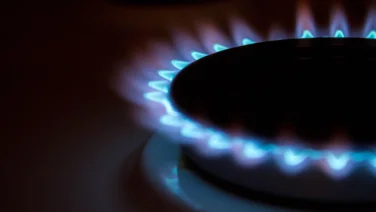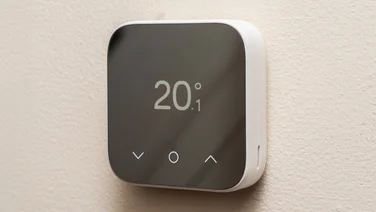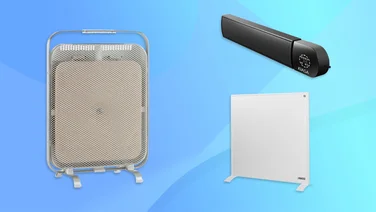To help us provide you with free impartial advice, we may earn a commission if you buy through links on our site. Learn more
- Get a free solar panel installation quote today
- What are solar panels for boats?
- Why should I install solar panels on my boat?
- How do boat solar panels differ from roof solar panels?
- What type of solar panel should I get for my boat?
- How many solar panels does my boat need?
- How much do solar panels for boats cost?

Water and electricity may not be an obvious match, but solar electricity is the ideal way to power water-going vessels. Solar energy is clean, silent, portable, infinitely renewable – and once you’ve bought solar panels for your boat, completely free.
Solar energy is a versatile source of power for boat owners. The smallest solar panels can keep your boat’s battery charged and run devices on board, while larger solar arrays can power an engine, freeing you to sail the seven seas without having to refuel.
Solar panels for boats face particular challenges, such as exposure to the elements and an inconsistent position in relation to the sun. Marine solar panels need to be durable and efficient to make the most of the rays they get.
In this article, we’ll help you find the ideal solar panels for your boat, whether you’re cutting up the waves in a powerboat or getting cosy in a houseboat. We’ll also run through costs, including installation, and key features to look out for.
READ NEXT: Best solar panels
Get a free solar panel installation quote today
If you’re ready to chat to an installer about solar panels for your home, fill in our quick form and we’ll put our recommended local providers in touch.
What are solar panels for boats?
Solar panels for boats, sometimes called marine solar panels, aren’t much different from the solar PV (photovoltaic) panels you might install on the roof of your house. Both types of panel are durable, waterproof units containing crystalline silicon, which captures energy from the sun’s rays then converts it into electricity to power your equipment.
READ NEXT: Best solar battery storage
Why should I install solar panels on my boat?
Even small boats with outboard motors need to be powered by something, and solar energy is one of the cleanest power sources available. At a time when our rivers and oceans are struggling amid rapid climate change and acidification caused by high levels of carbon dioxide, switching to solar energy means you’ll be doing your bit for the waterways you love.
Solar energy also makes financial and practical sense for boat owners. After you’ve paid for your panels, which will last 25 years or more, solar is a completely free source of electricity. Here are just some of the things it enables you to do:
- Charge your boat’s battery and reduce the load on the battery bank. Your solar panels will charge the battery while you’re away, so it rarely needs recharging and should never run down completely.
- Power your boat without the need to carry diesel, or to stop for refuelling. If your boat is too big to be powered completely by solar electricity, look at combining a solar-powered electric engine with a petrol or diesel-powered generator.
- Dramatically reduce your boat’s noise level.
- Power your boat in summer without overheating the cabin.
- Power any appliances on your boat, ranging from phone chargers to entire houseboat kitchens.
- Reduce carbon dioxide emissions and other pollutants, and reduce the weight of your boat.
READ NEXT: How many solar panels do I need?
How do boat solar panels differ from roof solar panels?
Marine solar panels come in a wider range of shapes and sizes than solar panels for house roofs. Most are smaller, lighter and more portable than roof panels, so you can move them around your boat to catch the sun’s rays.
The main differences, however, are behind the scenes. All marine solar panels need a charge controller to manage the voltage the boat’s battery receives, and if you plan to plug in any devices on board you’ll also need a solar current adaptor.
1. Charge controller
The charge controller, also called the solar regulator, monitors and controls the flow of electricity in and out of your boat’s battery, and prevents it from receiving more voltage than it can handle. It also stops power from flowing back out of the battery when it’s not needed.
A charge controller is an essential component of a solar PV system on any boat, except perhaps for very low wattages (panel power ratings) around 10W. For panels of 30W and above, definitely get a controller. Locate it in a cool, well-ventilated spot close to the battery – and keep it dry if you can.

2. Solar adaptor (DC to AC)
Solar panels produce DC (direct current) electricity, which is the same type of current that boat batteries and engines use. So if you’re only using solar panels to run your battery and/or engine, you won’t need to convert the current. But if you’re using any plug-in devices or appliances, you will need to convert it to AC (alternating current), which is the type you use in your home.
In your house, this job is done by an inverter, which connects directly to your solar panels. But on a boat, this is normally done by a solar adaptor, which connects to the boat’s battery. If you want to plug anything in on your boat, let alone live on board, then make sure your solar panel kit includes an adaptor.
READ NEXT: Best solar power banks and chargers
What type of solar panel should I get for my boat?
There are two types of crystalline panels: polycrystalline panels, which are cheaper and less efficient, and monocrystalline panels, which do a better job of converting sunshine to electricity. We recommend spending a little extra to buy monocrystalline panels, which also cope better under hot conditions, such as direct sunlight at sea.
Crystalline solar panels are available in rigid or flexible formats, each with their own pros and cons for using on boats:
Rigid solar panels are covered with thick, toughened, waterproof glass and typically have an aluminium frame. The best marine solar panels are rigid monocrystalline models that boast high efficiency ratings and are engineered to endure whatever the ocean throws at them. Rigid solar panels can be bulky and difficult to position on a boat, but their high efficiency means they can generate an impressive amount of power from a relatively small surface area.
Flexible solar panels can be draped over curved surfaces and can often even be walked on (non-slip coating essential), so they’re appealing to boat owners. However, truly flexible solar panels are usually polycrystalline, so they’re much less efficient than rigid solar panels with an efficiency range of around 13-16% compared with up to 23% for rigid monocrystalline panels. Because of this, you’ll need more of them to generate the same amount of power.
READ NEXT: How efficient are solar panels?
How many solar panels does my boat need?
To work out this number, you must first calculate your boat’s energy requirements in Watt-hours (Wh or kWh). Add up all the energy used per day by each device on board, such as your fridge and computer, as well as the battery. Don’t forget to include the engine if you plan to power that with solar energy, too. This will give you an idea of the size and number of panels you’ll need.
Here are a few examples:
- Lights: 50Wh per day
- Computer: 100Wh per day
- Fully charge a 12V boat battery: 200Wh
- Fridge: 500Wh per day
- Run a powerboat engine: 10kWh per hour
Here’s how that translates into solar panel sizes and their typical daily output:
- 1x 30W portable solar panel: 100 – 200Wh per day
- 1x 100W rigid solar panel: 300 – 600Wh per day
- 1x 400W rigid solar panel: 1.2 – 2.4kWh per day
That means you may only need one portable or rigid solar panel to keep your battery charged and your devices running. Weekend sailors who only need to keep their battery charged may be content with a single 30W polycrystalline panel, which you can pick up from Amazon for under £50. More on prices in a moment.

If you want to switch to solar to run your engine, you’re going to need a bigger panel. It may also be worth investing in a solar storage battery, which lets you store up the electricity your panel produces during the week so you’re good to go at the weekend.
READ NEXT: How do solar panels work?
How much do solar panels for boats cost?
As a rule of thumb, expect to pay around £1 per watt for a marine solar panel. Prices also rise as panel efficiency ratings increase. The other key factor is whether you want to go the DIY route or have your panels professionally installed. The latter option will probably result in a more efficient system, but will add £500 or more to the upfront cost.
If you want to stick with the cheaper DIY option, you can either buy all the components separately or in one go as a kit, with all clips and cables included. Amazon has a fantastic range of DIY marine solar panel kits that include charge controllers and AC/DC adaptors, as well as all the necessary cables and clips.If you’re buying components separately, DIY solar panel retailers such as Plug-in Solar and Select Solar will help you find the right equipment to go with your choice of panel.
Here’s a list of various applications (and estimated prices) for suitable DIY solar kits:
Keep your boat’s battery charged: £30 – 100
You can pick up a Topsolar 30W solar panel kit with charge controller, clips and cables from Amazon for just £40, or a 20W version for £30. The rigid polycrystalline panel weighs less than 3kg and will fully charge your battery even on dark, cloudy days.
Charge all your devices on board: £160- 300
An ideal choice here would be the Renology 100W solar RV kit (£250) which is designed for campervans but would also work well on a boat. You get one 100W 12V monocrystalline solar panel, a charge controller, solar adaptor kit and 16ft of cable, as well as brackets, housing and a Bluetooth monitoring module.
A sailboat for liveaboard holidays: £450 – 700
The Solmax 180W semi-flexible solar panel kit (£470) is a lightweight, portable and extremely durable panel designed for a week or two off-grid in a campervan or on a boat.
Live on board a houseboat: £600 – 1,500
You can get 500W marine solar panel kits from Amazon for around £600, and this would be enough to power a houseboat kitchen and heating. Moving up the price scale, the Photonic Universe 500W narrowboat solar kit (below) is an excellent investment at £1,169.

If you want professional installation and a custom solar PV system for your boat, add at least £500 on top of the panel price. Bear in mind that a boat is a potentially hazardous location for a solar PV system, and solar is a long-term investment. The higher the quality of your installation, the more electricity your panels will deliver. A qualified professional will also get the system installed much faster, usually in a day.
READ NEXT: Best DIY solar panels
Want to chat to installers? To get no-obligation quotes from local solar providers, enter a few details into our free tool above, and we’ll ask our recommended firms to get in touch






